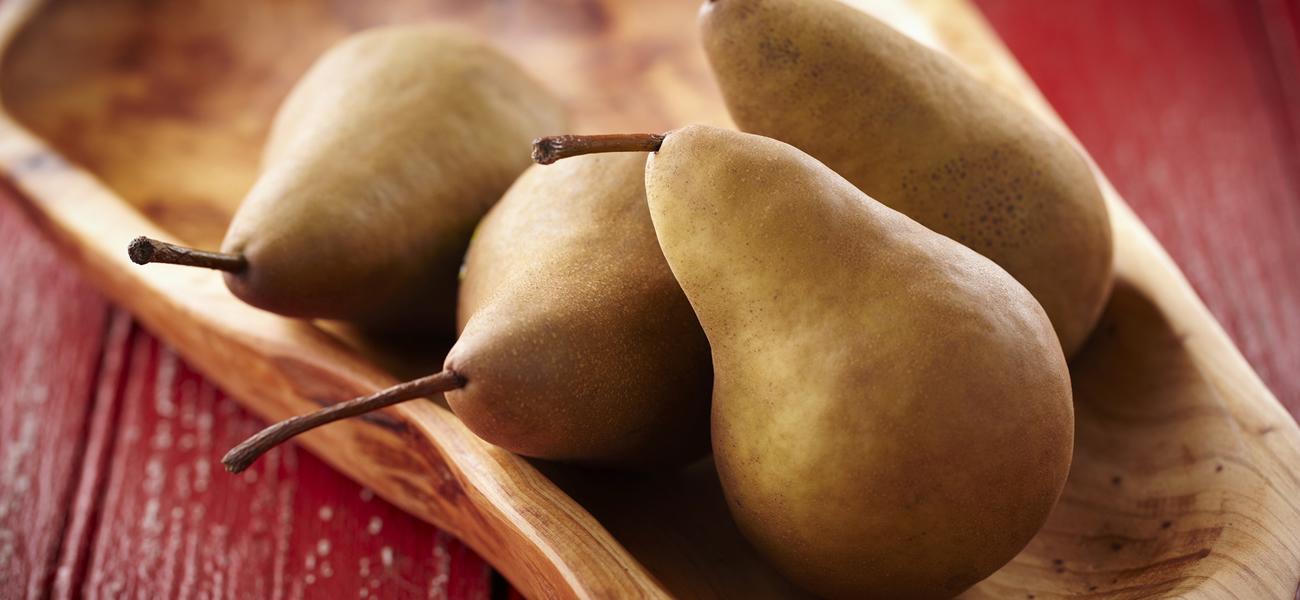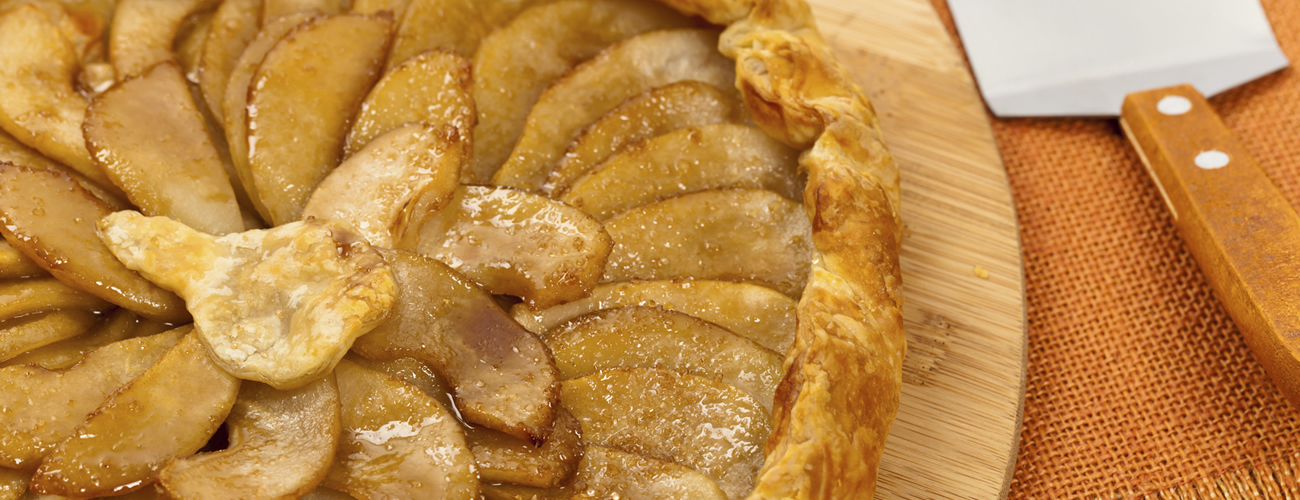| Availability | |||||
| Aug | Sep | Oct | Nov | Dec | Jan |
| Feb | Mar | Apr | May | Jun | Jul |
Bosc pears have a long, curved stem and elegant elongated neck that widens gradually to a full rounded base. They are also unique for their color: a warm cinnamon brown with russeting over the surface of the skin. The russeting is a natural appearance for Bosc. It may cover the entire surface, or it may just be seen over a small portion of the skin. In either case, the quality of the fruit is not affected.
Bosc pears have a more firm, dense flesh than other pear varieties, so they are ideal for use in baking, broiling or poaching. They retain their shape and texture better than other varieties, and their flavor is less likely to be overwhelmed by the use of strong spices like cinnamon, clove or nutmeg.
Ripen Bosc pears as you would any other variety: leave them at room temperature and only refrigerate after the pears have ripened. However, the density of their flesh is greater than other pears, so it’s important to take this into consideration when determining whether or not your pears are ripe. The Check the Neck™ test is still the best method for checking Bosc for ripeness. But, keep in mind that Bosc will “give” less than other pears when they are ready.
Harvest for Northwest Bosc pears begins in early fall.
More information on the Sage Fruit Pear Program.
Uses: Fresh, Baking, Pouching

